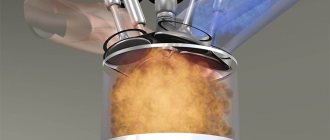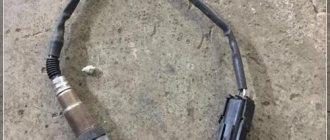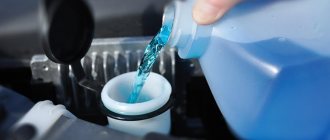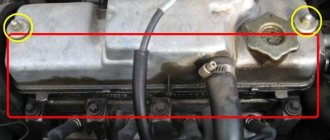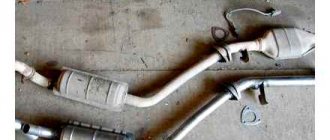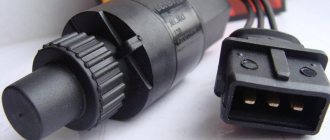There are frequent rumors and tales about the filling of foreign powders into the fuel system of a car with its subsequent failure. Consequently, many wondered what would happen if sugar or salt were poured into the gas tank of a car, and some users even conducted experiments.
Where did the myth that sugar is bad for your engine come from?
The myth that if someone adds sugar to the fuel tank of a car and that it will dissolve, reach the engine and then cause the car to explode is false.
It was popular back in the 1950s when people said someone put sugar in their gas tank and they couldn't start their car. The problem is that the car's starting problem was not due to sugar destroying the engine. Back in the 50s, fuel pumps were mechanical and many were mounted at the bottom of the fuel tank. What will happen is that the sugar will remain in a solid state and turn into crystal. This will clog the fuel pump and cause fuel problems, resulting in difficulty starting or running. Eventually, the car owner would take the car to a local shop, the mechanic would drain the gas and clean all the sugar gunk out of the tank, fuel pump and fuel lines and the problem would be solved. Modern cars have electronic fuel pumps, but can still fall victim to obstructions that can cause starting problems.
Car jokes, car dirty tricks, car nasty things and methods of education
Let's start with the fact that everything described below is not a good thing, and sometimes even a crime. However, you need to know this, first of all, so that: 1) you yourself are fully armed and have fewer problems in such situations; 2) Have you thought about the consequences of your intemperance and possible rudeness; 3) and finally, it's just interesting. The main thesis is that a car is a fragile and unprotected thing; it is impossible to constantly monitor its safety and, as a result, monitor what is done to it in your absence. Also remember that if you did something to your neighbor, he can do it to you. So what is it?
Does sugar dissolve in gasoline?
Regular sugar belongs to the group of highly organic substances - polysaccharides. Such substances do not dissolve in hydrocarbons under any conditions. Numerous experiments with sugar from various manufacturers, which were carried out by experts from popular automobile magazines, give an unambiguous report. Sugar (in any of its forms - lumps, sand, refined sugar) does not dissolve in gasoline either at room temperature or at elevated temperatures. The duration of exposure, exposure to ultraviolet radiation and other factors do not change the overall result. Therefore, if attackers try to pour sugar into a car’s gas tank, the most serious thing that can happen is that the fuel filter will become clogged, and then with an almost empty gas tank, since the density of sugar is much higher than the density of gasoline.
A completely different situation arises if the gasoline in the tank of your car is not of the highest quality, for example, contains a small percentage of water. Water, as you know. It does not mix with gasoline and settles to the bottom of the fuel tank. This is where the sugar will dissolve, and with a small amount of water, a thick sugar syrup will result. It will be the cause of all subsequent troubles with the engine.
This can also happen at low negative outside air temperatures, when the seal of the gas tank cap is not very good. The crystallizing frost inside the tank will turn into moisture - and then the same problems will occur.
Thus, it is more dangerous for a car to have water in the gas tank than sugar. Hence the conclusion - refuel only at proven gas stations, and carefully seal the gas tank in cold weather.
Chemical processes and their influence
The consequences of sugar getting into the gas tank are very disastrous for the engine and its satellites. In addition, the degree of negative impact varies depending on the type of engine. So, sugar clearly enters the tank not of its own free will, but with someone’s help. Some people, for one reason or another, want to harm a specific person out of envy. It often happens that the object becomes the car.
The reasons can be very different:
- Domestic quarrel;
- Corporate envy;
- Disrupt a championship or competition;
- The girl or spouse chose someone else;
- This is the type of character a person has;
- There is no possibility of self-realization in any other way.
At first glance, the results may be exactly like this. Indeed, as a result of exposure to elevated temperature, the process of caramelization and burning begins, this is familiar to us from the kitchen.
An analogy can be made with diesel fuel.
Absolutely no reaction and no dissolution. This also means complete neutrality in diesel fuel.
Conclusion:
First of all, equip a lid with a lock for the tank neck, even if it is primitive and simple, but this will make it difficult for an attacker to gain access to the system. Car dealerships and car markets are full of hose-shaped meshes with different diameters, which can and are recommended to be installed in the fuel tank for fuel filtration.
Fastening occurs using an expansion ring, which will prevent the mesh from falling inside. The minimum length of such a sleeve is about 25-30 cm, which is quite enough for a pistol. So she won't be a hindrance to you.
Microscopic diameter sizes allow you to retain condensation, water, metal waste, hair, wool and other debris. Imagine what you can see there during cleaning. In this way, you will extend the life of the fuel filter and protect the tank from uninvited guests. Cleaning is carried out according to the degree of contamination, for each person differently.
Thanks to its unique properties, the mesh can take different shapes, which makes it practical and applicable to all types of cars. With the help of the device, the consequences of sugar getting into the gas tank will be reduced to “0”. Don’t be lazy, buy a reliable and trusted keeper of your car. Good luck to you.
You can often see this unusual question on various automotive forums: what happens if you pour sugar into a gas tank? The answer to it, if you look at it (you will see this below), is not so complicated. But the completely logical indignation of most motorists will become more understandable: how can sugar end up in the gas tank? They do not make tea or coffee, lollipops or even caramels here. What can a car tank and... sugar have in common? Let's take a closer look.
Physical presence of sugar in the tank
Since refined sugar cannot dissolve in a mixture of organic solvents, it will simply be distributed along the bottom of the tank in its original (i.e., crystalline) form. There will be no more damage from sugar in gasoline than from ordinary mechanical impurities that get into the fuel system. The crystals are quite large and will be retained by the fuel filter, so they will not reach their target (the combustion chamber in the engine).
Video What harm will sugar cause to the engine if it is added to the gas tank?
What happens if you drive with a handbrake?
A well-known way among motorists to “layer” their enemy is to pour a good portion of sugar into the gas tank of his car. This method of revenge, as they say, is extremely effective and destructive to the engine, and only very bad people are capable of using this option in practice, pouring a generous portion of sweet revenge into the fuel tank of their opponent. And, voila, after he starts his car, after some time, figuratively speaking, his life will not be easy. Is it so? It’s unlikely that anyone has seriously thought about conducting such an experiment, so we consider it a great success to show you a video we found on YouTube, in which they talk about the consequences of adding ordinary table sugar to gasoline and the subsequent operation of the engine on this mixture.
The video example uses an internal combustion engine from a lawn mower as an experimental model. Before conducting the experiment, the video blogger made several preliminary measurements, removing the cylinder head and first visually inspecting the carbon deposits and the condition of the piston, valves and cylinder walls. You can watch the process from 0.35 to 55 seconds of the video.
Next, compression was measured on a cold and hot engine. 68 PSI cold and 72 PSI hot.
Next, a large spoonful of sugar was added to the gasoline; in terms of volume relative to the amount of fuel, it took up approximately 1/10th of the amount. An attempt to dissolve sugar in fuel brought virtually no results. Sugar is poorly soluble in gasoline.
Pay attention to the volume of gasoline in which they are trying to dissolve sugar. Can you imagine how much sugar is needed to get an equivalent mixture if we are talking about a standard car gas tank?
Next, the mixture along with sugar was poured into the fuel tank, the engine was started and an experiment lasting more than 100 minutes began. While the engine was running, a small amount of bluish smoke was observed at 3.45 minutes in the video.
After all the fuel had been used up, crystallized sugar was visible in the gas tank; a significant part of it remained inside without passing through the fuel line.
Results of an experiment with adding sugar to fuel
Compression dropped slightly when cold, 65 PSI versus 68 PSI in the original version. When hot, the engine did not feel worse in terms of compression.
When removing the engine “head”, formations of baked sugar were discovered in the combustion chamber. On the cylinder head, on the piston and on the valve.
The conclusion summed up by the video blogger is that there is harm caused in this way, but it is minimal and is more likely to be reflected in the long-term period of operation. The blogger does not give specific advice if sugar is suspected or detected in the fuel tank, but he asks a rhetorical question to his viewers. What would you do if you found sugar in your gas tank:
1. Would you flush the fuel tank?
2. Have you changed the fuel filter?
3. Would you remove the cylinder head and carry out an inspection?
4. Or would you use additives?
What would you do?
Information publication: Traffic police news, accidents, traffic fines, traffic police, Online traffic rules exam. Technical inspection
How will sugar affect engine performance?
In short, negative. Especially in the following cases:
- While driving on a bumpy road. By settling to the bottom, sugar thereby reduces the amount of fuel that is poured into the gas tank. Consequently, the first more or less serious pothole - and the fuel filter will catch not gasoline, but sugar (granulated sugar in this sense is more dangerous). The fuel line is unlikely to become clogged, but the filter will have to be replaced.
- When driving on difficult roads with high fuel consumption. In this case, the surfaces of the fuel line are heated to temperatures that cause caramelization of the sugar - turning it into a solid yellowish-brown mass. It sticks to the walls and narrows the size of the flow area, sharply worsening the operating conditions of the engine.
- If sugar particles enter the fuel injector, this will lead to a deterioration in fuel injection conditions, since grains of sand will be deposited in the internal cavities of the fuel pump. The engine will stall over time. And it may not restart if the fuel flow is blocked by lump sugar.
Previously existing problems of sugar particles getting into the gaps between the piston rings, as well as into the valves, are no longer relevant: modern car models are equipped with fairly reliable systems for filtering fuel from any foreign particles.
Consequences of water getting into the tank in winter
Condensation that leaks into the gas tank during winter cold is especially dangerous. This can cause ice to form in the lines, resulting in an ice barrier. This problem can be solved by defrosting in an underground parking lot or heated garage. But the opportunity to drive a car in a warm place does not always exist and you may have to understand the “here and now”.
When water freezes in pipes, the ice barrier is removed during “rescue” by heating the pipes and then pumping out the system. You will need to turn off the fuel supply and crank the starter until clean fuel comes out. Therefore, it is worth preparing for the fact that the process will take a long time and require considerable effort.
How to detect the presence of sugar
As a rule, it is not possible to independently verify the presence of sugar inside a car gas tank. Car owners should be concerned about low-quality gasoline with a large amount of water in its composition, so it is very important to use special dryers.
It is quite possible to determine on your own that the fuel is not good enough with minimal expenditure of time, effort and money:
- By mixing a small amount of gasoline with several crystals of potassium permanganate. The presence of water in the composition is indicated by the fuel turning pink.
- By soaking a clean sheet of paper in gasoline, which, after drying, should retain its original color.
- By igniting a few drops of gasoline on a clean glass. High-quality burnt fuel does not leave rainbow stains on the glass surface.
If you suspect the presence of sugar in the gas tank and contact the service center, a car enthusiast may be in for an unpleasant surprise. During the diagnostic process of the fuel system, sugar particles are detected in the gaps between the piston rings and the presence of grains of sand on the inside of the pump. The result of such problems is often a stalled engine and varying degrees of clogging of the fuel line. A very high risk of any excess components getting into the fuel always remains if there is no lock on the car gas tank cap.
A “joker” caught red-handed, pouring sugar into the tank of a vehicle, may well be held accountable for petty hooliganism or damage to someone else’s property.
The myth of sugar in the fuel tank is nothing more than a hooligan prank glorified in yard folklore, which has no scientific basis. Nevertheless, such actions may well provoke some unpleasant consequences, so the car owner should definitely provide reliable protection for the gas tank cap and refuel only at proven gas stations.
Conducting an experiment
To do this you need:
- glass container;
- petrol;
- sugar.
Why does the container have to be glass? In order to be able to monitor the amount of material used.
Fill the dishes with gasoline and add sugar. Mix the mixture well and wait for the ingredient to completely dissolve. It is this moment that decides everything. You can wait as long as you like, but sugar simply cannot dissolve in gasoline! You might think that the legend of a faulty engine is a legend. The problem and results that some forum participants promise do not arise. But there are still unpleasant consequences, because sugar begins to move along with gasoline. The liquid then enters the fuel system filter and becomes clogged.
Large sugar particles do not allow gasoline to pass normally into the engine. There will be problems with quickly starting the engine and most likely you will need to install new filters. Yes, problems arise, but they have nothing to do with the fictional legend. Sugar will not ignite if it enters the gas tank. However, such an experiment will not pass without a trace. Purchasing and installing new filters is quite expensive, so you need to be careful. It is better to secure your car and put a lock on the gas tank cap.
For the experiment we need
- sugar;
- petrol;
- glass container;
Pour gasoline into the container and then add sugar.
After we mix everything well, wait until our main ingredient dissolves.
And here the main surprise will await us. You can spend a lifetime waiting for sugar to dissolve, because, as it turns out, sugar does not dissolve in gasoline! As a result, we understand that the legends that tell us about jammed engines caused by sugar added to the gas tank are fiction!? Without a doubt, adding a “sweet white ingredient” to the gas tank will not go completely unnoticed for the engine - sugar, of course, will get onto the fuel system filters and, no matter how much you want it, will clog them.
It's all about the filters
The fact is that filters in a car's fuel system capture particles that are much smaller than sugar granules.
Therefore, any of the fuel filters will stop them before they even get into the engine. There are fabric filters surrounding the fuel pump in the gas tank, in-line fuel filters at the inlet of the fuel tank pump, filters for the high pressure fuel pump in the engine compartment, and filters at the inlet of each fuel injector. And even if you have a carbureted engine that does not have fuel injectors or additional filters, it is unlikely that sugar will be able to penetrate very far into the engine.
According to Muhammad, sugar is about twice as dense as gasoline, so some granules don't even make it to the filters. Sugar granules simply end up in pockets and corners of the gas tank. So if someone throws sugar in your gas tank and you remove it to clean it, you will see a lot of sugar granules at the bottom.
Ultimately, this can lead to clogged filters in the tank and prevent the correct flow of fuel - it is likely that long-term operation of the car with clogged filters will lead to burnout of the fuel pump. However, Chris Louis, Bosch's chief technology officer, says it's unlikely things will get to that point.
So if you find that someone has put sugar in your gas tank, all you have to do is simply remove the tank to clean it and replace the filter. Just in case, you can check the fuel pump and, if its flow does not meet factory specifications, replace it.
Then your engine will be in perfect order.
Chemical reaction of gasoline with sugar
There's really not much to talk about here. There can be no chemical reaction between gasoline and sugar. In other words, it simply cannot dissolve because there is no water in it.
For clarity, you can conduct a very simple experiment. For it you will need regular sugar, refined in cubes, a transparent glass glass, water and a little gasoline.
Next we proceed as follows:
- Pour gasoline into a glass;
- Add sugar;
- Next, try to mix thoroughly. (You will see that nothing happens)
- Now put a couple of cubes and leave them there for a couple of hours. (During this time they will not even begin to collapse, much less dissolve).
If you add a little water, some of the sugar will be able to dissolve, this will be noticeable by the thickened “clouds” that appear. Under normal circumstances, this would mean that the gasoline is of poor quality and is diluted with water.
Of course there is no need to worry. Water is lighter than fuel, so it will rise to the top and will not be able to enter the system, and if it does, it will no longer make much difference with or without sugar.
Physical presence of sugar in the tank
Here everything is even simpler, as was written earlier, it cannot dissolve, so it will simply settle at the bottom of the tank. It will cause no more harm than any other debris that gets into the gas tank.
In this case, it can actually clog the filter or fuel system. This can be noticed by a sudden loss of power when the gas pedal is pressed.
In most cases, it is enough to clean or replace the fuel filter; in some cases, a complete cleaning of the entire fuel system will be required.
There is also an opinion that once sugar gets in, it forms carbon deposits in the gas tank and this soon leads to the engine failing. But this theory is nothing more than a rumor, and it is not confirmed by anything.
Experiment video
What to do if sugar gets into the gas tank
It is believed that once sugar gets into the engine, it burns and forms quite a large deposit on the walls of the piston and cylinder, as a result of which the engine simply jams.
It seems true, because sugar actually caramelizes at high temperatures and can burn, which means that if it gets through the fuel system it will cause a lot of trouble.
If sugar gets into the gas tank and is detected, it is necessary to clean the tank, replace the filter, fuel pump, carburetor and engine valves. By the time the driver notices a malfunction, or rather it will make itself known, these parts of the car will become completely unusable.
It does block large particles, but the smallest particles of sugar pass through the filter freely. And although their path ends with the combustion chamber, even those parts that fail can cost the driver considerable expenses. Especially if you added sugar to the tank of a brand new foreign car. On top of everything else, a vehicle that stalls during the journey, especially for an unknown reason, is a waste of time and nerves.
How does a car react to sugar in the gas tank?
There is a myth circulating on the Internet that sugar can significantly harm engine performance. Proponents of this opinion argue that when sugar moves into the combustion chambers, it begins to turn into caramel. Afterwards, it begins to ignite and remain on the walls as a dense soot, which in turn remains on the walls of the cylinders and pistons. Because of this, the power unit stops working. Sounds true, but is it really true? As the practice of many culinary experts shows, sugar really begins to turn into caramel and burn.
To begin this process, you just need to add it to your gas tank. Having assessed the situation, you might think that nothing will happen to the liquid and that sugar, like gasoline, will simply go straight into the engine. But the fact is that this is where problems begin that have unpleasant consequences. Let's do a little research to answer this question. For the sake of authenticity, those who wish to conduct such a study of the problem themselves can do so. But it is advisable to do this outside and be careful. Do not forget that gasoline is a flammable product.
How to protect your car
The most difficult thing in such a situation is not car repair, but the search for intruders. If the car is parked in the yard or in a free parking lot where there are no video cameras, determining who, when and how added sugar to the gas tank is like looking for a needle in a haystack.
If a car enthusiast has not yet purchased and installed it, he risks becoming a victim of the actions of ill-wishers or jokers. Moreover, adding sugar to the fuel tank is the easiest and most affordable way to disable a car for a long time. At the same time, it will not be possible to drive it until the driver eliminates the cause of the breakdown and the failed parts.
Prevention and consequences
If you do not put a lock on the fuel tank cap of your car, the danger remains. Otherwise you will have to:
- Thoroughly clean the fuel lines and fuel tank.
- Replace filters.
- Test the operation of the fuel pump, as well as the fuel injection system to the engine.
If there is “sugar” deposits or syrupy liquid at the bottom of the gas tank, this work will be very labor-intensive. There is only one conclusion - more carefully control the percentage of water in gasoline. There are quite a lot of ways. We list the main ones that you can do yourself, even before turning on the fuel gun:
- Mix a small amount of the proposed fuel with potassium permanganate (potassium permanganate should be in the first aid kit): if as a result the gasoline turns pink, it means there is water in it.
- Dip a piece of clean paper in gasoline and then dry it. High-quality fuel will not change the original color of the paper.
- Place a few drops of fuel on clean glass and light it. When burned out, good quality gasoline will not leave rainbow stains on the glass.
- Use fuel dryers regularly.
So what can destroy an engine?
If you shouldn't be afraid of sugar, what should you really be afraid of? Some people believe that water in a gas tank can cause much more damage than granulated sugar. Because for the engine to work properly, the fuel needs to burn, and water prevents this. However, this requires much more liquid than a disgruntled vandal could pour into a gas tank from a bottle or jug.
Some components of gasoline are very hygroscopic - in other words, they easily absorb water. Moisture-saturated air inside the gas tank will allow water to flow into the ethanol fuel.
Therefore, any car you see on the road already contains some water that flows through the fuel lines. But this is too little to cause serious damage to the car engine.
According to Louis, even deliberately adding water to your gas tank likely won't do any harm. Of course, unless the fuel is diluted so much that it is not enough to ignite and power the engine.
Water will simply displace some of the liquid fuel from the air-fuel mixture in the engine combustion chambers, but oxygen sensors and on-board computers will automatically neutralize the effect for normal engine operation. If the piston cannot complete its stroke in the chamber due to large amounts of non-flammable water, the engine becomes hydraulically locked.
This could cause significant damage, Louis said. However, in ordinary situations, the engine stops before the accident becomes catastrophic. So, like the myth of sugar, horror stories about water are inspired by urban legends.
People often say that there is some truth to every myth, but there is nothing concrete about the sugar and gas tank story. Early mentions of this legend date back to the 1950s. However, physics has not changed since then. All that such a trick can lead to is just a waste of granulated sugar.
By the way, our experts have a similar opinion. For example, here is an example of an experiment by the magazine “Behind the Wheel”, which decided to find out whether sugar dissolves in AI-95 gasoline.
The car magazine staff took a container of gasoline and put lump sugar in it, keeping it there for a day. As a result, the sugar did not dissolve. The white sugar lumps didn't even turn into a small pile of granulated sugar.
Next, in “Behind the Wheel” we decided to check how ordinary water affects the dissolution of sugar in gasoline. The experiment was repeated by adding ordinary water to gasoline and sugar. As a result, a layer of syrup appeared at the bottom of the container (the fuel remained on top, since gasoline is less dense).
Next, to ensure the reliability of the test, a fine filter was taken to check whether gasoline with sugar syrup would pass through it (there is a myth that this syrup can clog the filter). But the results of the experiment showed that gasoline with sweetened water passed through the filter without any problems.
Consequences of water getting into the tank in winter
Condensation that seeps into the gas tank during the winter cold is especially dangerous. It can cause ice to form in pipelines, thus causing an ice barrier. This problem is solved by thawing in an underground parking lot or in a heated garage. But the possibility of driving a car into a warm place does not always exist, and it may be necessary to figure it out “here and now.”
When water freezes in pipelines, getting rid of the ice obstacle during “emergency” occurs by warming the pipes and then pumping the system. You will need to disconnect the fuel supply and turn the starter until clean fuel comes out. Therefore, you should prepare for the fact that the process will take a long time and require considerable effort.
Fighting methods
How to remove water from a gas tank? There are many ways to solve this problem. All of them will not completely eliminate moisture seepage, but will limit its amount.
- Full tank filling.
- The need for constant refueling.
- Refuel only at verified gas stations.
We recommend: How to properly remove the engine block head?
Let's look at possible ways to remove water in more detail.
Ways to solve the problem
The essence of the first method is to drain the fuel - the simplest solution. You can completely empty the tank of fuel, wash it, and then fill it with new fuel to the maximum. Simple and reliable, but requires constant monitoring to ensure that condensate does not enter the tank again. You will have to constantly refuel and keep the fuel level at the limit, which is very expensive.
The next solution may be to use special chemicals that bind H2O molecules together, making them heavier. This way you can significantly reduce the amount of moisture in the tank, but you won’t get rid of it completely. The use of this additive requires subsequent removal of water (first method).
Similar products are available in the range of all major automotive chemical manufacturers.
And finally, the third solution: the most common and most effective is to remove the water with alcohol. Or use a ready-made moisture displacer. Using an alcohol solution removes condensation very quickly. Car enthusiasts have been removing water with alcohol for quite some time. And this is a very popular method. First, take 0.3-0.4 liters of alcohol solution.
Before filling the tank, fill in this solution in the specified amount. The interaction of H2O and alcohol produces a substance similar in density to fuel. Water will not solidify in the fuel lines thanks to this substance. Moreover, the combustion of this solution is like fuel. One interesting fact should also be noted - all additives that are designed to remove moisture in the tank are based on alcohol. Therefore, you don’t have to spend extra money, but simply pour in the alcohol solution.
Water in a car's gas tank can cause a lot of trouble, especially for cars with diesel and injection engines. Actually, the engine itself will survive the water, but either the injection pump (high pressure fuel pump) or the fuel injection system will fail.
Water in the gas tank is especially dangerous in winter. It does not mix with gasoline in a calm state and accumulates at the bottom of the gas tank.
If the driver is one of those who like to spend gasoline to the last drop, then sooner or later water will get into the gas line. And it might simply freeze there, blocking the path for gasoline. And there will be no other way to get rid of water (or rather, ice), other than to put the car in a warm box. And again, water will go to the engine with possible very unpleasant consequences.
The driver, thinking that he just ran out of gas, will pour it into the gas tank and try in vain to start the car. Water can enter the gas tank, for example, as a result of condensation of moisture from the air. There are motorists who constantly keep the tank half empty: they drive with a minimum supply of fuel, adding 10-15 liters when refueling. When the weather changes frequently, especially in the off-season, it is very easy to get into a situation where warm, humid air with a high content of water vapor enters the gas tank.
Remember the situation? The tank was full, the fuel was almost empty, we drove up to refuel. We open the lid - p-sh-sh-sh-sh-sh... Atmospheric air entered the tank. And we fill it halfway. As the temperature drops, moisture condenses and, already in liquid form, sinks to the bottom of the gas tank. But it cannot evaporate from it - gasoline is lighter than water, “covers” it and does not allow it to evaporate. And so, drop by drop, water begins to accumulate in the gas tank. Therefore, to prevent water from accumulating in the gas tank, it is advisable to keep it as full as possible and refuel at every opportunity.
We recommend: Why do car brakes squeak and what can you do about it?
If the situation allows, avoid refueling on particularly foggy days with an empty tank, filling the minimum amount. If you are already refueling, pour under the cap to almost completely displace the moist air from the gas tank. We won’t talk now about the “cunning” gas station owners who are not averse to increasing the volume of fuel sold by adding water. It’s better to avoid “casual connections” and use proven gas stations.
When traveling long distances, it is better to take a canister with you rather than take risks. But no matter how hard the owner tries, there is always water in his gas tank, at least 50-100 g, but there is. And no matter how carefully you behave, sometimes there are situations when the warning light comes on, and there are still dozens of kilometers to a decent gas station... Therefore, you need to get rid of the water, preferably before the cold weather. And getting rid of water in the gas tank is quite simple.
Water practically does not mix with gasoline. But it mixes well with alcohol! Almost any: ethyl, methyl, isopropyl. The main thing is that it is not already diluted. However, the degree of water content in alcohol can be easily checked by igniting it. Pure alcohol burns with an almost invisible flame. Therefore, in order to dissolve water in a gas tank, you need to pour 200-500 ml of pure alcohol into it.
When mixed with water, alcohol forms a mixture with the same density as gasoline. And this mixture, firstly, will not freeze, and secondly, it passes through the entire fuel system without problems for the engine and burns like regular fuel. Moreover, its quantity is negligible compared to gasoline. Today, car stores offer various water removers from the gas tank, fuel system cleaners STP, 3TON, RunWay, Expert, BBF. Judging by the descriptions, they bind water, “lifting” it from the bottom in order to send it along with the fuel into the combustion chamber and from there into the exhaust pipe.
You can place the text in a frame and on a background! Note: If you pour alcohol into a gasoline tank, it is better not to drive immediately after that, but to refuel the car to capacity. But in a diesel engine, it is more effective to fill 50 liters of diesel fuel with about half a liter of engine oil. When driving, oil and water from shaking form an unstable emulsion that burns well.
If your diesel engine has a sump, then you don’t need to fill it with anything other than diesel fuel. In any case, getting rid of water, whether in the case of gasoline or diesel, is a very good thing to do before a long trip. During this trip, you must try to burn all the fuel to the end. The main thing is not to stay on the road: it is still better to fill up with the last liters before the traffic jam.
